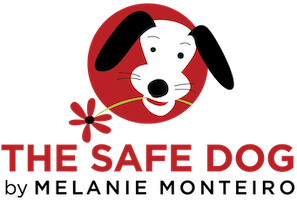...in honor of Pet First Aid Awareness Month Listen up, pup parents! We’ve been talking to your dog, and she thinks you’ve been doing a fabulous job with the food, the cuddles, the walks and the treats. But would you know what to do if she suddenly began choking on a toy, or was struck by a vehicle? Should the worst happen, your dog is counting on you to act fast. Here are 10 important ways you can prevent and prepare for a pet emergency. ...
Safety Tips
Garden of Eatin’ — How to Protect Nibbling Dogs from Toxic Plants
Most dogs love the outdoors. After all, what better place to stretch those legs, smell the roses (and other less-than-rosy things) or enjoy a satisfying romp in the park. While we tend to keep a close eye on our dogs when we’re out and about together, the backyard is often a place they get unfettered access — which can pose a hazard to those nibbling pups who view the garden as their own personal salad bar. ...
Disaster Preparedness: Create a Plan for Your Pet
From earthquakes and fires to tornadoes and floods, a natural or manmade disaster can strike anytime, anywhere — inspiring many responsible pet parents to create a disaster plan and kit especially for their pets. But what happens months or years after that initial effort? September is National Preparedness Month — the perfect time to share some essential “maintenance tips” to keep your existing disaster plan for pets in top shape year after year. ...
Dogs and Fireworks: Tips to Keep Anxious Pups Safe and Calm
For many dogs, fireworks are no cause for celebration. The loud noise and vibrations can be so intensely terrifying that with every 4th of July, animal shelters are inundated with lost pets who have dug, chewed, and clawed their way out of their homes and yards to run for cover. Other dogs remain inside but injure themselves trying to scratch and burrow their way into closets, through screen doors, and under furniture to hide. If your dog is bothered by fireworks, take care to ensure her sanity and yours with the following safety tips. ...
Toy Breed Safety: Protecting Pint-Size Pups in a Great Big World
One of the great things about toy breed dogs is their ability to fit just about anywhere — your lap, your purse, under your coat when sneaking into those less-than-welcoming office buildings... But their diminutive size also presents extra challenges when it comes to keeping them safe. This week, I shared some of my favorite small dog safety tips with DogVacay, the awesome online community of dog sitters and pup parents. Visit the DOGVACAY BLOG to get the scoop! ...
Winter Hazards: Protecting Your Pup from Hypothermia & Frostbite
Most dogs love a good romp in the snow or long walk on a frosty day. And for the most part, they’re naturally equipped to tolerate cold temperatures to an impressive degree —especially dense or double-coated breeds like Siberian huskies and Saint Bernards. But there are instances in which prolonged exposure to cold causes a dog’s body temperature to drop dangerously low, resulting in hypothermia. Dogs at a greater risk for hypothermia include those that are small, very young or old, thin coated, have low body fat, health issues (such as heart disease or diabetes), or those that become wet ...
The Hungry Dog’s Guide to a Safe Thanksgiving
You know it. Your dog knows it. Thanksgiving is here, and there’s no way you’re going to resist those adorable, pleading eyes. And that’s okay! As long as your pup doesn’t have any food sensitivities or GI issues — and you know which foods to avoid feeding your dog at all costs — you can feel free to share the joy. Here’s a handy guide to hazardous and safe holiday food items: NO WAY (with a brief explanation why) Turkey skin, fat trimmings, gravy and other high fat foods (GI upset/pancreatitis risk) Cooked bones (Choking/GI hazard) Yeast dough (can ferment and expand in stomach ...







